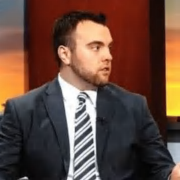Revealing the 50 Most Influential Teams in NFL History: Nos. 30–21

The National Football League has played 104 seasons, dating back to its roots as the American Professional Football Association (APFA) in 1920.
Since then, there have been 2,321 teams spanning the NFL’s and American Football League’s history. Yet only a select few have made a lasting difference, something by which they have been—and will forever be—defined.
Here at Sports Illustrated, we embarked on a journey with the hope of finding the 50 most impactful teams in NFL history. Our process was simple.
- Read the full list here: Counting Down the 50 Teams
During the offseason we brought together a 31-person blue-ribbon panel consisting of media members, analysts, former front office personnel and more, having each vote on more than 100 candidates. Each panelist voted for 50 teams, with their top team earning 50 points and their 50th team garnering a single point.
From those tallies, we detailed why each team deserves to be on the list, including quotes from panelists for every squad. Most importantly, SI reached out to a star player or head coach for every team from the Super Bowl era (1966 to present), gaining valuable insight into what made those teams so unique.
Below are the panelists and their titles, followed by our list. Next up: Nos. 30 to 21. Enjoy.
Watch the NFL with Fubo. Start your free trial today.
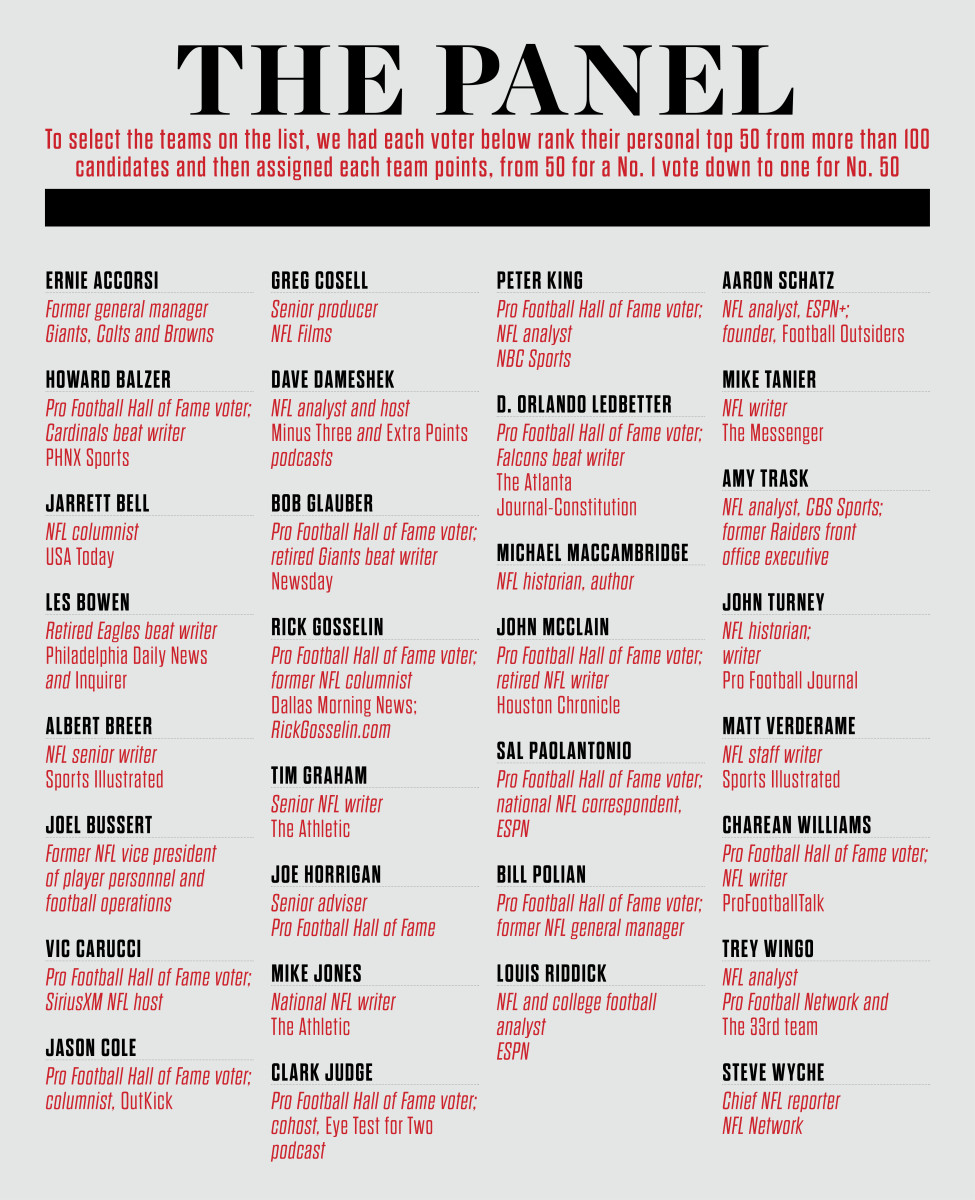
30. 2007 New York Giants
Record: 10–6, Super Bowl XLII champions
Coach: Tom Coughlin
Hall of Famer: Michael Strahan (DE)
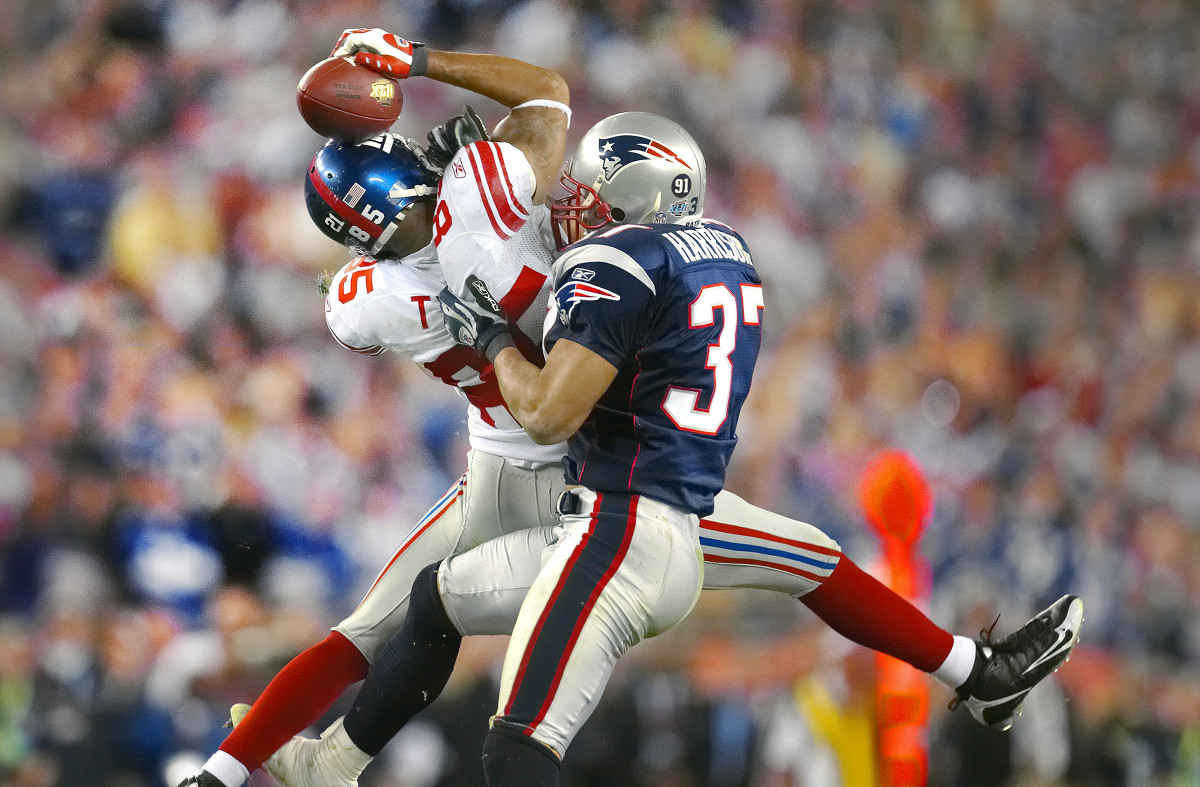
Why they mattered:
Rare is the team on this list that didn’t have a major schematic impact or the historical importance of breaking a barrier. Heck, the 2007 Giants don’t even have an all-time player save for Michael Strahan.
Yet few teams have changed the history of the league more than New York. The Giants, who went an unremarkable 10–6 after an 0–2 start, won three consecutive road playoff games to arrive at Super Bowl XLII as 12.5-point underdogs against the 18–0 Patriots.
Then the impossible happened. Eli Manning found David Tyree, the Giants held one of the league’s all-time offenses to 14 points, and New York beat New England, 17–14.
For the Giants, their impact is obvious. Should the Patriots have beaten them, they’d inarguably be the greatest single-season team of all time, having gone 19–0 in a league long on parity. Instead, New York won one of the more iconic games in NFL history.
New York’s win also prevented the Patriots from matching the 1972 Dolphins as the only unbeaten, untied team in league annals.
Panel quote:
“Eighty-three yards to your place in history. It seems that the only place to start is at the end when Eli Manning directed a 12-play, 83-yard drive in 2:07 to conclude with a 13-yard touchdown pass to Plaxico Burress, winning the world championship and ending Bill Belichick’s quest for a perfect season. The drive included some unexpected precision passes and a heavenly helmet catch by David Tyree. But not to be forgotten was a ferocious pass rush that Tom Brady described as trying to throw through redwood trees. The 2007 season was saved on the early evening of Sept. 23 on the road against Washington, when a winless 0–2 Giants team somehow staged a goal line stand in the final seconds and escaped with a victory. That was the day they gave this Team Named Desire, with apologies to Tennessee Williams, the chance to go down in history.” —Ernie Accorsi, former Giants general manager
Team quote:
“We played a physical brand of football on both sides of the ball that was demanded of us. We did it. And then I think the mental toughness, that side of the game, wins and loses a lot of games. Nobody preaches that more than coach [Tom] Coughlin. The leaders bought in, therefore everyone bought in. When things got rough, when there was adversity which happens in every football game, it never rattled us or sent us in a tailspin. We would always find a way to regroup and grind things out, and find a way to win. Get it in the fourth quarter and find a way to win. We had a team full of guys that bought into it.” —Chris Snee, Giants guard, 2004–13
29. 1986 New York Giants
Record: 14–2, Super Bowl XXI champions
Coach: Bill Parcells
Hall of Famers: Bill Parcells (HC), Lawrence Taylor (LB), Harry Carson (LB)
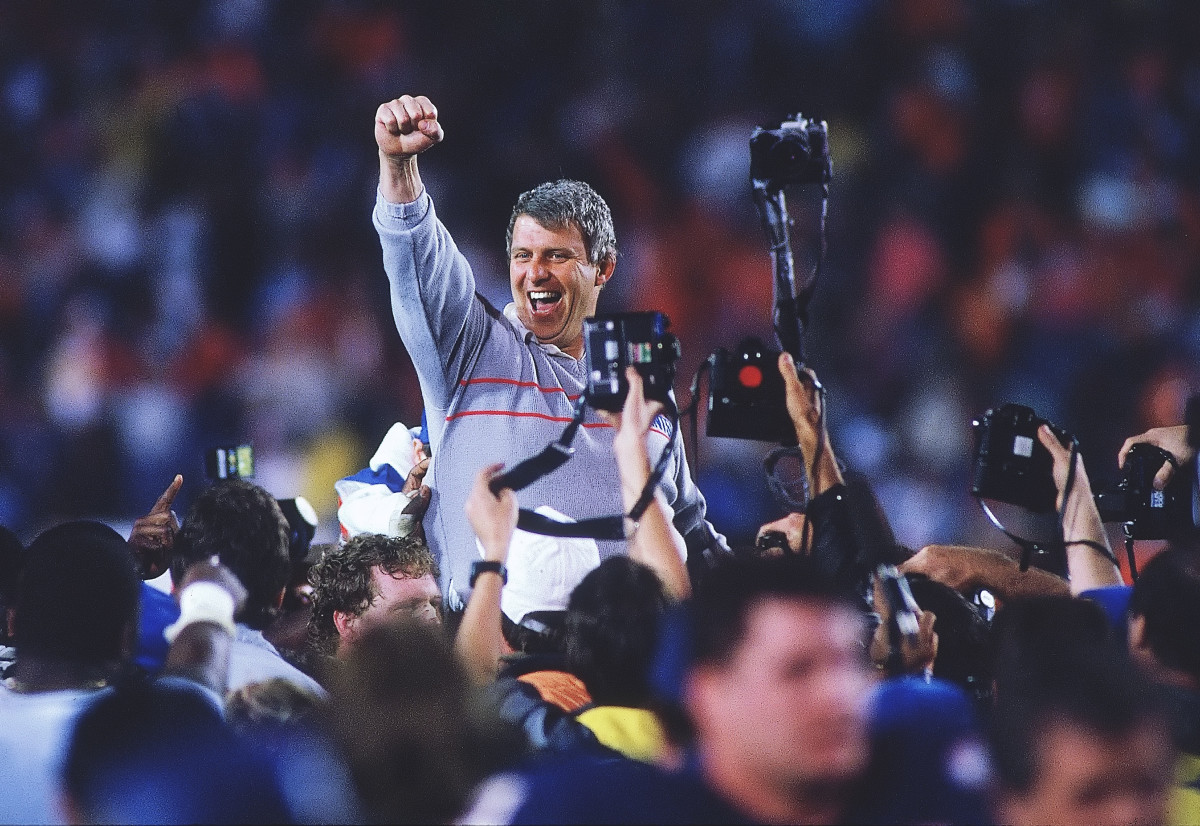
Why they mattered:
Defense wins championships, and in 1986 the Giants proved it.
After staggering through the late 1960s and all throughout the ’70s, New York selected linebacker Lawrence Taylor in the ’81 draft. Taylor immediately led the Giants to the playoffs as a rookie to kick off six consecutive first-team All-Pro selections.
In 1986, Taylor and Big Blue put everything together. While the Giants’ record of 14–2 was impressive, Taylor’s impact is what endures. He remains the last defender to win MVP, racking up 20.5 sacks. He also forced innovation, as Washington coach Joe Gibbs utilized a one-back offense in part to help block Taylor, instead of the traditional two-back schemes. This allowed for a double team using a tackle and a tight end instead of a running back tasked with Taylor.
However, nothing could stop Taylor or the Giants in 1986. New York rolled to the NFC East title before dismantling the 49ers and Washington in the NFC playoffs to the tune of 66–3. In Super Bowl XXI, the Giants won 39–20 over the Broncos, giving them their first title since ’56.
Panel quote:
“It is impossible to overstate the historical significance of this team, simply because that championship run finally delivered the Giants from a decades-long downturn that was their worst and most prolonged since the team was founded in 1925. But beyond that, the ’86 Giants were one of the great single-season teams in NFL history, and that three-year championship run of the 49ers, Bears and then the Giants represented three years of iconic champions. This was Lawrence Taylor in his prime leading an all-time defense with Bill Belichick as coordinator. It was Bill Parcells crushing BIll Walsh in the playoffs on the way to dominating John Elway in the Super Bowl. And it was Phil Simms with a near-perfect game as Super Bowl MVP. Easily the best of the Giants’ four Super Bowl championship teams.” —Bob Glauber, retired Giants beat writer, Newsday
Team quote:
“We had two really big figures on the team who are still talked about today by a lot of people. Of course, that’s Lawrence Taylor and Bill Parcells. That was usually the story with our team. Talked about more than anything was always those two during that run over many years, and rightfully so. … Bill Parcells that year distinguished himself in many ways as a great game manager and not how everybody thinks. In other words, [that] he wanted to run the ball every play. Yeah, he liked to run the ball because he liked to be the bully, but he loved big pass plays.” —Phil Simms, Giants quarterback, 1979–93
28. 1975 Dallas Cowboys
Record: 10–4, NFC champions
Coach: Tom Landry
Hall of Famers: Tom Landry (HC), Roger Staubach (QB), Cliff Harris (S), Mel Renfro (CB), Drew Pearson (WR), Rayfield Wright (OT), Randy White (DT)
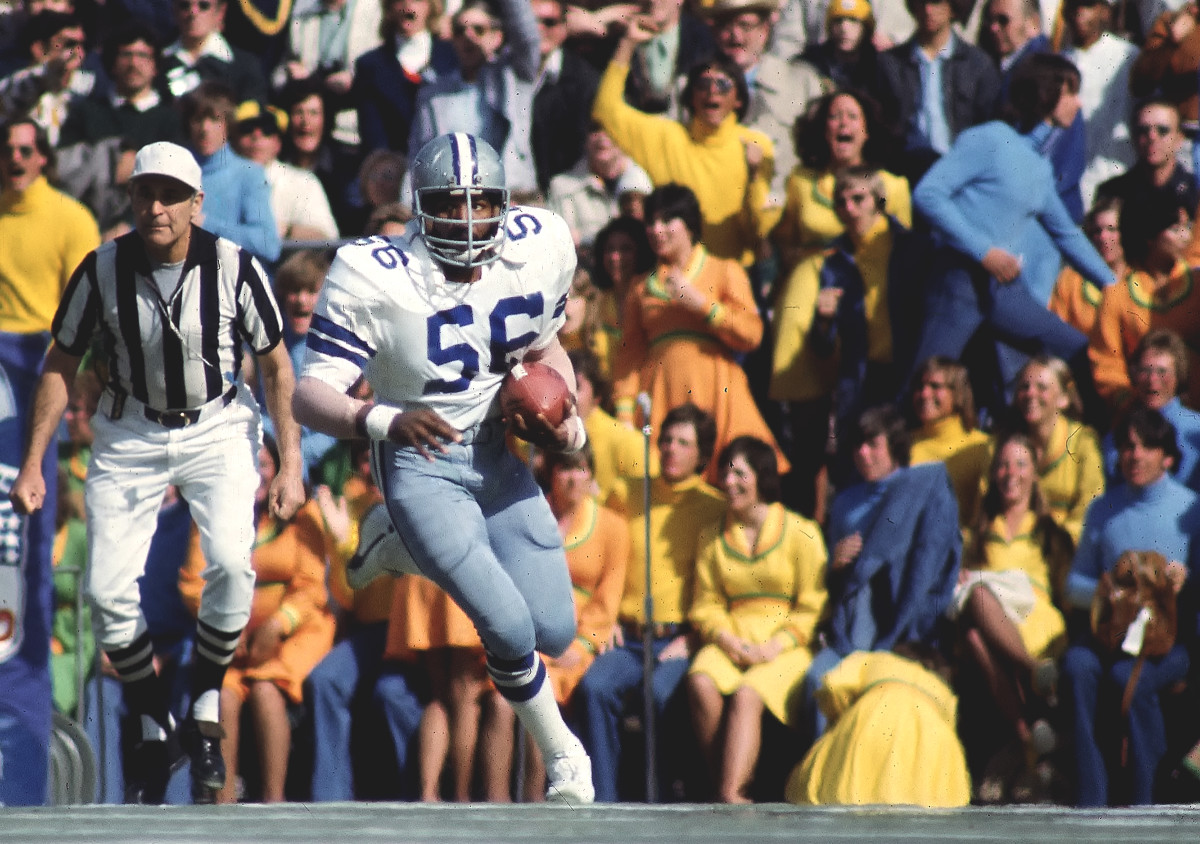
Why they mattered:
Few men won more, or had more of an impact on both sides of the ball, than the man who wore the funny hat.
The 1975 Cowboys were a perfect example of what made coach Tom Landry such a critical figure in pro football’s ascension. Dallas took the shotgun formation—first introduced to the NFL by Red Hickey with the 49ers in ’60—to new heights, utilizing the dual-threat abilities of Staubach. The Cowboys also did something unique to them with the offensive line, having their front five stand up before resetting to hide men in motion for a brief moment.
Additionally, this particular edition of Dallas is known for popularizing the Hail Mary. This came from a divisional win over the Vikings at Metropolitan Stadium, where Staubach found Pearson for a 50-yard touchdown in the final seconds to beat Minnesota, 17–14.
Although Dallas lost in Super Bowl X to the Steelers, the Cowboys’ contributions are more prevalent than ever today, specifically with shotgun snaps more common than with a quarterback being under center.
Panel quote:
“After the 1974 season, the talk in Dallas was less about the Cowboys’ ‘Doomsday Defense’ and more about a team that just seemed doomed. It wasn’t just that their eight-year streak of playoff appearances came to an end with an 8–6 record. It was also that they bid farewell to some of the greatest players in franchise history with the departures of Bob Lilly, Bob Hayes, Calvin Hill, Walt Garrison, Cornell Green and John Niland. But in ’75, the Cowboys were revived, largely with the help of a draft highlighted by Hall of Famer Randy White and Thomas ‘Hollywood’ Henderson. After a 10–4 finish, the Cowboys became the first NFL wild-card team to reach the Super Bowl.” —Vic Carucci, Pro Football Hall of Fame voter
Team quote:
“That blend, with the new and the old, and the good coaches that we had, really worked. We were determined. I remember coach [Tom] Landry telling us in training camp that we had to win our home games and steal a few on the road. Once we’re in the playoffs, anything can happen. That was our attitude in ’75.” —Ed “Too Tall” Jones, Cowboys defensive end, 1974–78 and 1980–89
27. 1922 Canton Bulldogs
Record: 10-0-2, NFL champions
Coach: Guy Chamberlin
Hall of Famers: Guy Chamberlin (HC), Link Lyman (LT), Pete Henry (RT)
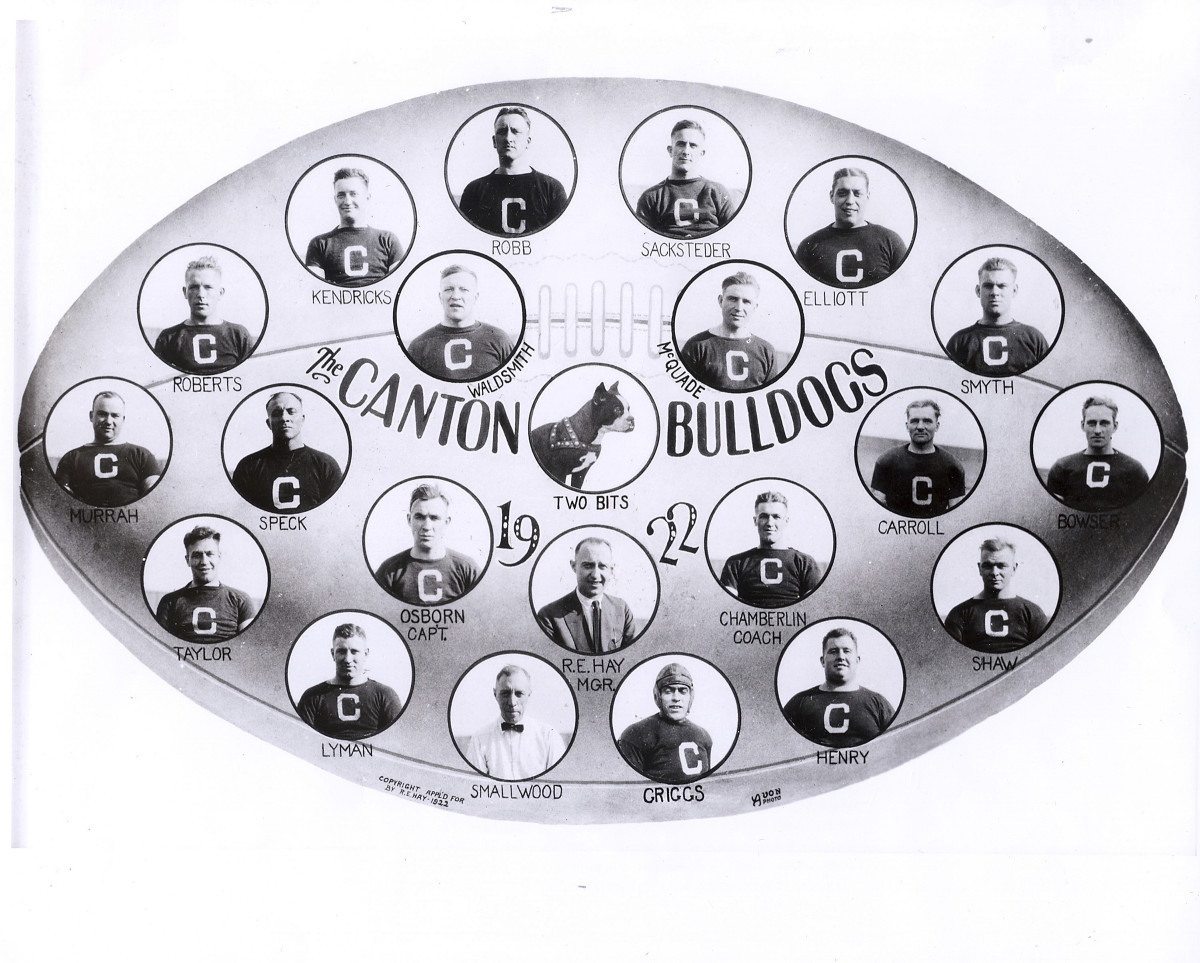
Why they mattered:
The Bulldogs were the first great team in NFL history. Under Chamberlin, Canton went undefeated in both the 1922 and ’23 seasons, combining for a record of 21-0-3. In that span, the Bulldogs outscored their opponents, 430–34. The franchise relocated to Cleveland in ’24 and won a third consecutive title, recording a 7-1-1 mark.
Chamberlin’s teams were known as the preeminent power running team of the era, at a time when the forward pass was in its infancy. Routinely playing in front of crowds of fewer than 5,000, Canton showcased a style that was largely replicated over the coming years, as later in the decade the pro ranks swelled with top talent coming out of the collegiate game.
In addition to being a legendary coach, Chamberlin was also a dominant player. He led the Bulldogs with seven touchdowns in 1922, helping his own cause. He was one of many player-coaches of the era, including George Halas of the Bears.
In totality, Canton helped to establish the NFL after Akron’s initial title behind coach-player Fritz Pollard, allowing the league to find its footing throughout its first few seasons.
Panel quote:
“Dynasties are good for sports. They build brands and in this case, helped get the NFL into the public view as it began its ascent from afterthought to cultural giant in the U.S. While the Bulldogs are largely a footnote at best to most current fans, they served as a jumping-off point for the league at a time when it was unclear whether pro football had a future in America. In the coming years, the Bulldogs folded like so many other early franchises, but their impact can’t be understated.” —Jason Cole, Pro Football Hall of Fame voter
26. 1984 San Francisco 49ers
Record: 15–1, Super Bowl XIX champions
Coach: Bill Walsh
Hall of Famers: Bill Walsh (HC), Joe Montana (QB), Ronnie Lott (S), Fred Dean (DE)
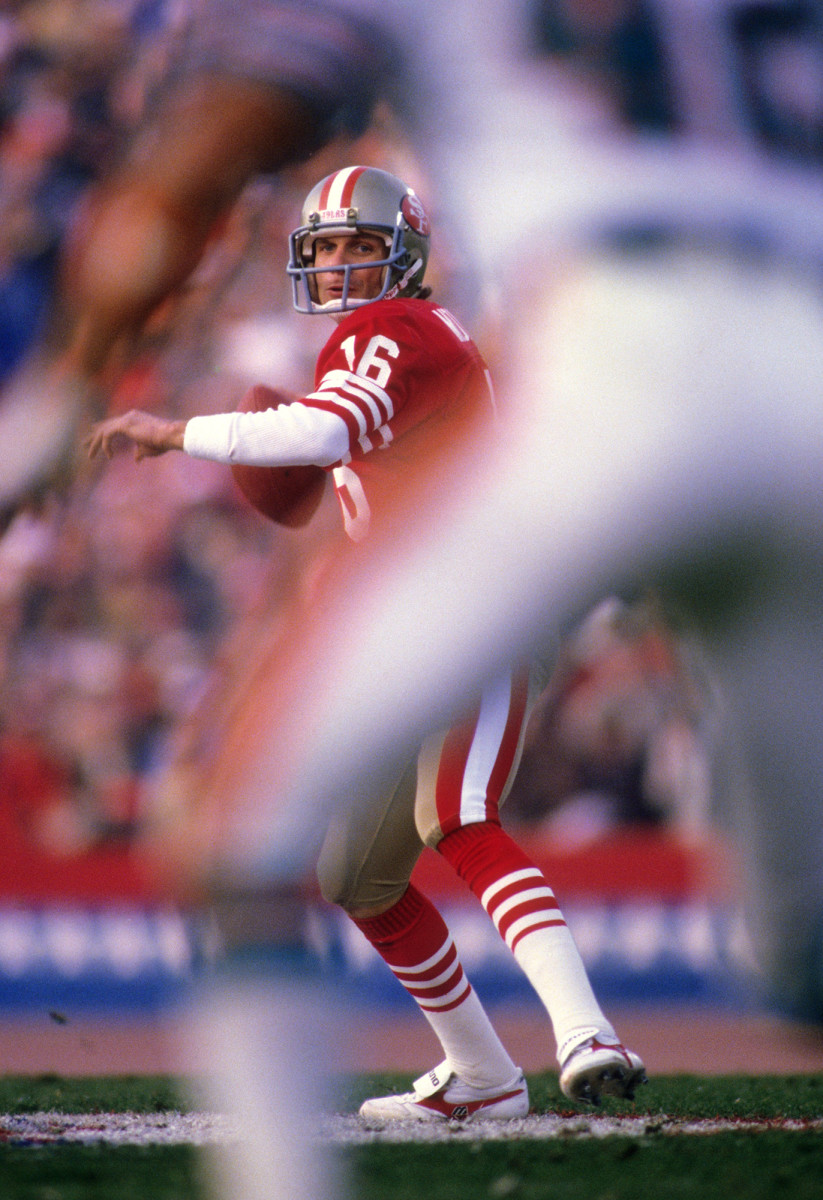
Why they mattered:
Few teams have been so dominant as the 1984 49ers. But for impact, they also stand the continuous test of time.
After winning a shocking Super Bowl in 1981, San Francisco had to retool before reemerging in ’84 as a juggernaut. The main addition on offense was fullback Roger Craig, who in his second season caught 71 passes for 675 yards, giving him 1,324 total yards on the season.
While Craig wasn’t the first back to be a pass-catching weapon (the league was paced in receptions by running backs more often than receivers in the 1970s), it was the validation of coach Bill Walsh’s West Coast offense.
Walsh first devised his scheme of short, rhythmic passing with the Bengals in 1970 while serving as offensive coordinator, and then utilized it to win Super Bowl XVI in his third season with the 49ers. That year, fullback Earl Cooper posted 51 catches, but San Francisco was seen by some as a one-year wonder. In the two years bookending its first title, San Francisco went 9–16.
However, in 1984, Walsh’s team left no doubt about the veracity of his system. San Francisco lost only one game while scoring 475 points. In Super Bowl XIX, the Niners annihilated the Dolphins’ “Killer B’s” defense, scoring 38 points.
Panel quote:
“Another masterpiece created from the brilliant mind of Bill Walsh, it proved that the first Super Bowl crown was no fluke and fueled the march toward Team of the Decade status. And it was almost perfect. A three-point loss to Pittsburgh in Week 7 was the only blemish on the journey to a Super Bowl XIX rout of Miami. Joe Montana and Ronnie Lott were fully entrenched as superstars in 1984, and Walsh’s system—including the overall organizational flow—was clearly a step ahead of the competition. Yet despite the achievement of becoming the first NFL team to win 15 regular-season games, this still may not have been the best 49ers team of the ’80s—as Jerry Rice and others had yet to arrive.” —Jarrett Bell, NFL columnist, USA Today
Team quote:
“It was Heaven. It was like I went to Heaven. Bill Walsh is the man. I love that guy. He trusted me. He believed in me. Being the first player to rush for 1,000 yards and receive for 1,000 yards, as a fullback? Come on. Bill Walsh believed in me with that. I loved that guy. He’ll always be my favorite coach.” —Roger Craig, 49ers fullback/running back, 1983–90
25. 1963 San Diego Chargers
Record: 11–3, AFL champions
Coach: Sid Gillman
Hall of Famers: Sid Gillman (HC), Lance Alworth (WR), Ron Mix (OT)
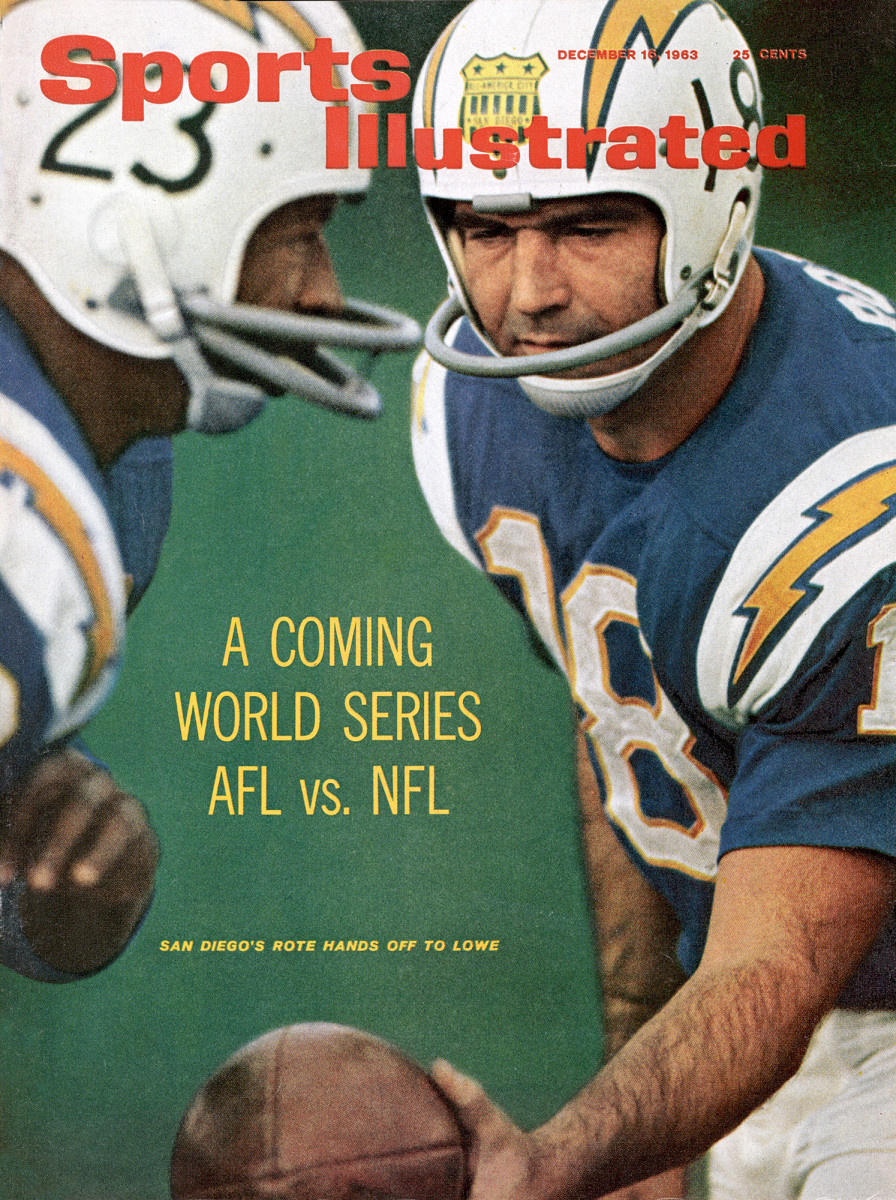
Why they mattered:
In its fourth year of existence, the American Football League began shaping the future. In the 1963 Chargers, the AFL provided a champion many watched with awe and curiosity.
In a league known for its insistence on the passing game, San Diego took scheming to another level. Gillman, who previously had an unsuccessful 28-31-1 stop with the Rams from 1955 to ’59, became a football icon for his vertical passing attack.
Utilizing veteran quarterback Tobin Rote and the brilliance of Lance Alworth, San Diego rolled to an 11–3 mark while finishing first in both points scored (28.5 per game) and allowed (18.2 per game). In the AFL title game, the Chargers dismantled the defensive-minded Patriots 51–10. That afternoon, San Diego amassed 610 total yards on its way to what remains the franchise’s only championship.
Afterward, the Chargers challenged the NFL champion Bears to a de facto title game between the two leagues, but nothing materialized. There was a thought San Diego had the better team, something which the AFL and NFL settled three seasons later with the merger agreement and subsequent Super Bowl I.
Panel quote:
“Sid Gillman would pretty much be viewed by everybody as the father of the modern-day passing game. He changed the way the pass game was structured. He understood the whole concept of geometry in the passing game. He understood the concept of spacing in the passing game, and that kind of changed the way people thought about it. Prior to that, the passing game wasn’t really thought about much in that way. He brought some new ideas. The other thing he did was back in those days, teams played with a halfback, fullback and tight end. There was no such thing as a third wide receiver. But [Gillman] had a fullback named Keith Lincoln, who was an excellent receiver, and he started to split him out, and what that does is change protection concepts because you have one less pass protector.” —Greg Cosell, senior producer, NFL Films
24. 1920 Akron Pros
Record: 8-0-3, AFPA champions
Coach: Elgie Tobin
Hall of Famer: Fritz Pollard (RB)
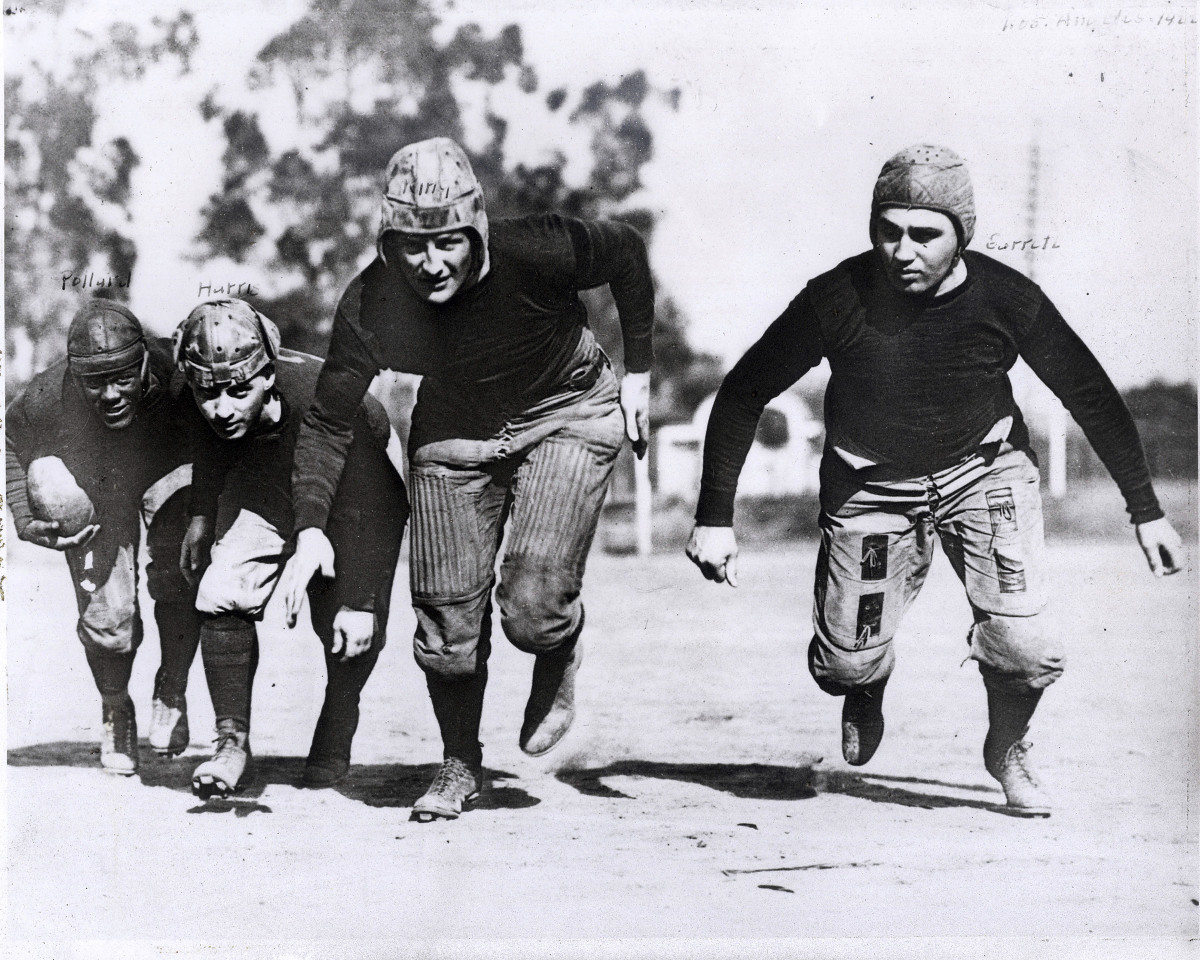
Why they mattered:
While the NFL wouldn’t become known as such until two years later, the Pros won the league’s inaugural title. Akron was dominant even in a time of teams coming and going throughout the season, allowing only seven points all year.
However, the Pros’ biggest lasting impact came from their leader in Fritz Pollard, who was one of only two Black players in the NFL during its first campaign, playing as a 5'9",165-pound running back. At the time, Pollard was the highest-paid player in the league.
Ultimately Pollard has had a lasting impact. After being Akron’s coach in 1921, Pollard served one more game as coach of the Hammond Pros in ’25 and exited the NFL for good in ’26. A color barrier soon followed.
Still, Pollard’s legacy endures. The Fritz Pollard Alliance works today to ensure minorities in the NFL are given opportunities to become coaches. Pollard, a graduate of Brown University, was posthumously inducted into the Pro Football Hall of Fame in 2005, 51 years after he was enshrined into the College Football Hall of Fame.
Panel quote:
“The 1920 Akron Pros were charter members of the National Football League and the league’s first champion. In addition to their place in history as the NFL’s first champions, the Pros are remembered as one of only two teams in the league’s inaugural year to have an African American player, halfback and future Hall of Famer, Fritz Pollard, who had signed on with the Pros in ’19, one year before the league was founded. Further, in ’21, Akron named Pollard its head coach, becoming the first and only African American head coach in the NFL until Art Shell in ’89.” —Joe Horrigan, senior adviser, Pro Football Hall of Fame
23. 1992 Dallas Cowboys
Record: 13–3, Super Bowl XXVIII champions
Coach: Jimmy Johnson
Hall of Famers: Jimmy Johnson (HC), Troy Aikman (QB), Emmitt Smith (RB), Michael Irvin (WR), Charles Haley (DE)
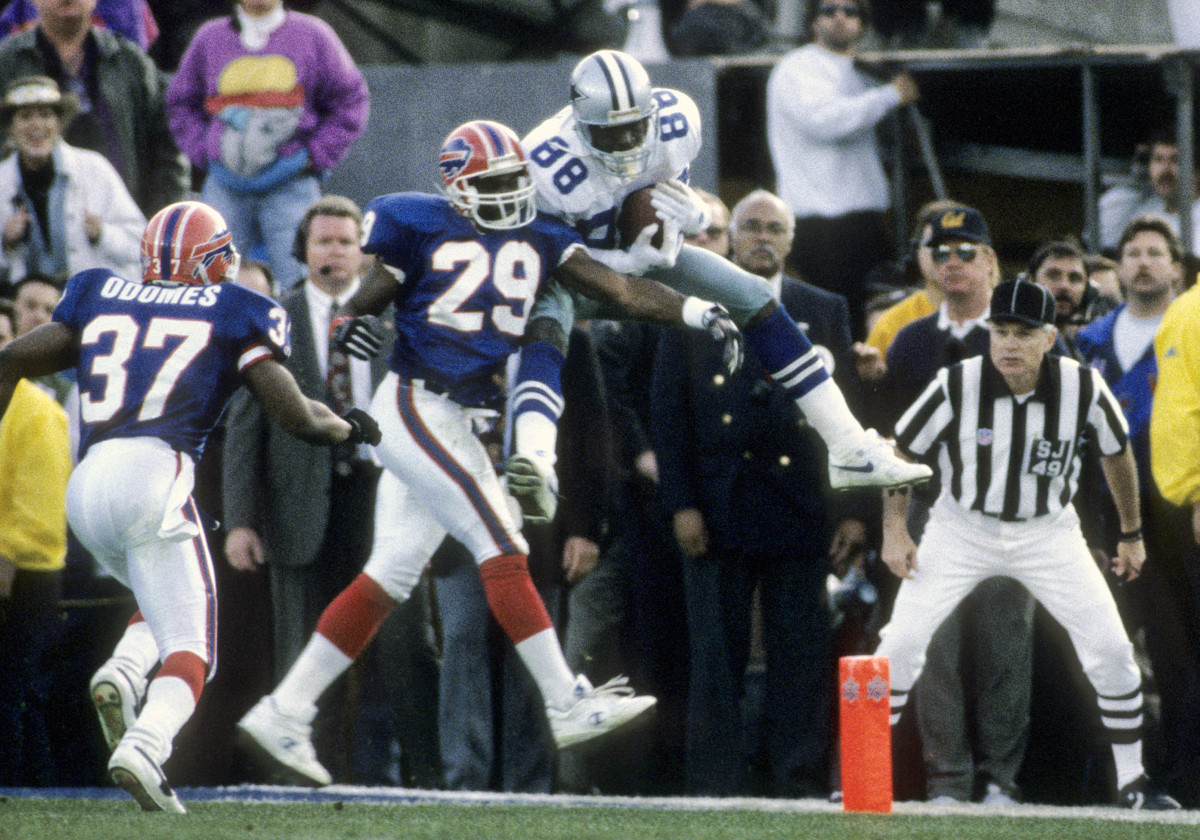
Why they mattered:
The 1992 Cowboys are a four-year story culminating in a championship.
When owner Jerry Jones bought the club before the 1989 season, he installed Jimmy Johnson, his former Arkansas teammate, as coach, replacing the venerable Tom Landry. Johnson’s plan to restore Dallas’s respectability included a controversial trade of Pro Bowl running back Herschel Walker to the Vikings.
In return for Walker, the Cowboys received three first-round picks (conditional), three second-round selections (two conditional), a third-round pick (conditional) and a sixth-rounder along with five players. However, if Dallas didn’t keep those players, they were given first- and second-round selections by the Vikings in 1991 and ’92. Johnson knew this and chose the latter option, turning Walker into a treasure trove of draft capital, which he used on Emmitt Smith, Kevin Smith (CB), Darren Woodson (S) and Russell Maryland (DT).
With those choices, Dallas rebuilt quickly and won three Super Bowls in four years. Johnson’s ideas left a profound mark on the game, with many teams still using his draft value charts (each draft pick is assigned a numerical value) to help make trades.
Johnson also became the first coach to win a collegiate national championship and a Super Bowl, helping other college coaches get opportunities in the NFL.
Panel quote:
“The Cowboys traded [Herschel] Walker to the Vikings in 1989, a transaction that eventually involved 18 players and draft picks. Johnson sought to quickly rebuild a team that hadn’t had a winning season since ’85 and hadn’t been to the NFC championship game since ’82. Emmitt Smith and Russell Maryland were among the players the Cowboys ended up drafting with picks from the trade. Three years after the Walker trade, the Cowboys won their first Super Bowl in 15 years. In the 52–17 thrashing of the Bills in Super Bowl XXVII, the Cowboys forced nine turnovers and had four sacks. It began the Cowboys’ run of three Super Bowls in four seasons and the title of Team of the 1990s.” —Charean Williams, NFL writer, ProFootballTalk
Team quote:
“It became what it became because of Jimmy Johnson and the way Jimmy drafted. Coming out of college in [1989], he still had a pulse on recruiting classes and seeing players while he was there. Then, getting into the NFL and knowing how to pick personnel. It’s one thing to draft right early on, but Jimmy drafted extremely well in the later rounds. … There were so many guys that people had forgotten about or didn’t think so, and Jimmy was drafting these guys in later rounds. They were so damn good.” —Darren Woodson, Cowboys safety, 1992–2003
22. 1956 New York Giants
Record: 8-3-1, NFL champions
Coach: Jim Lee Howell
Hall of Famers: Sam Huff (LB), Frank Gifford (RB), Rosey Brown (OT), Emlen Tunnell (S), Andy Robustelli (DE)
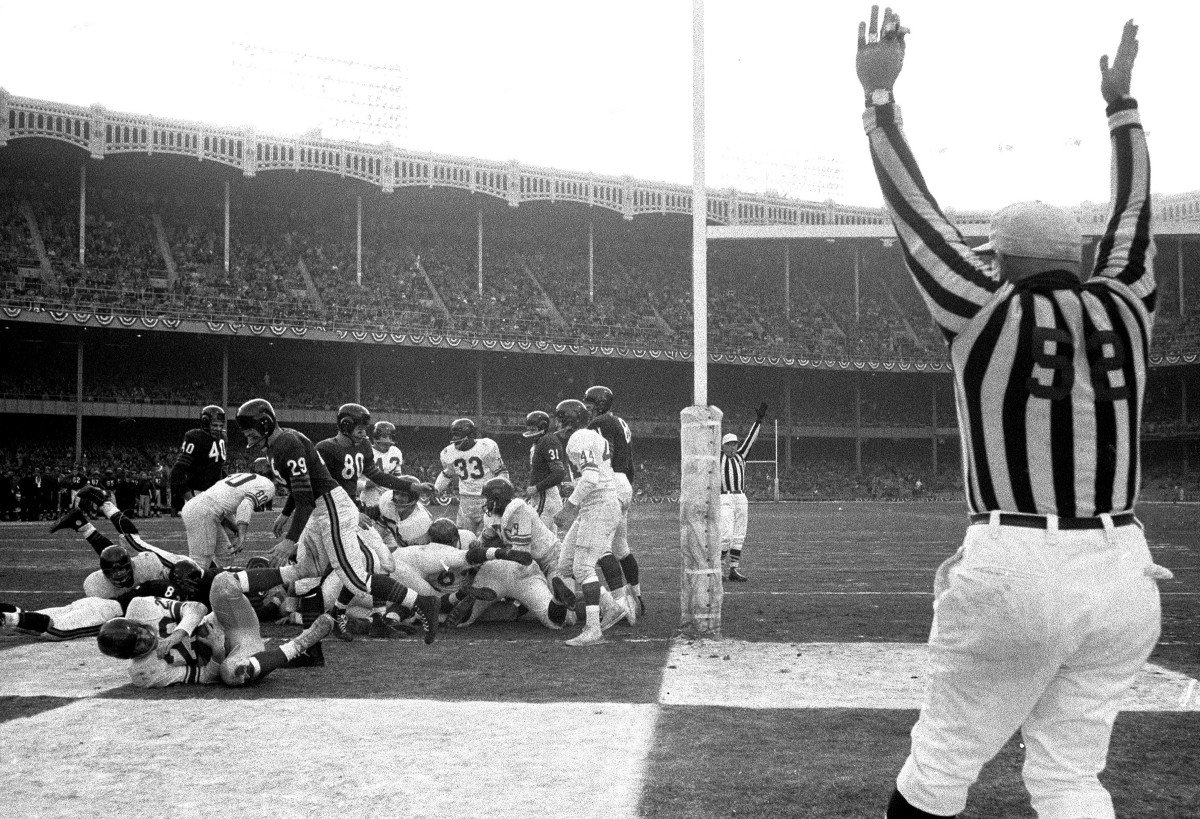
Why they mattered:
Few teams are remembered more for their assistants than the head coach, but the 1956 Giants are such a group.
While Jim Lee Howell was the main man, Tom Landry ran the defense while Vince Lombardi operated the offense of their championship group. The team was largely known for Landry’s unit, becoming the first team to invoke the chant of “Dee-fense” from the crowd.
The 1956 Giants weren’t a dominant champion, but they rolled the Bears in the title game, winning 47–7 at Yankee Stadium. New York was led by a burgeoning type of defense Landry is credited with creating, known as the 4–3, with rookie middle linebacker Sam Huff becoming one of the league’s first defensive stars.
As important as winning the league championship, the Giants helped pro football become mainstream in the world’s largest city. They became a staple on Madison Avenue, with quarterback Charlie Conerly, Sam Huff, Frank Gifford and others earning airtime away from the gridiron.
Between 1956 and ’63, New York reached six title games but won only one, leaving a legacy both of great import and what could have been. Lombardi left for Green Bay in ’59, while Landry was plucked away by the expansion Cowboys one year later.
Panel quote:
“The 1956 season was the high-water mark for the franchise to that point. This team had Hall of Famers in Frank Gifford, Rosey Brown, Andy Robustelli, Emlen Tunnell and rookie sensation Sam Huff, who would change the way defense was played. It also had [Vince] Lombardi and [Tom] Landry as its coordinators. Hindsight turned out to be a cruel reminder of what might have been, especially in the 30 years between that championship season and their first Super Bowl title that finally ended the longest dry spell in team history.” —Bob Glauber, retired Giants beat writer, Newsday
21. 1979 San Diego Chargers
Record: 12–4, lost in AFC divisional round
Coach: Don Coryell
Hall of Famers: Don Coryell (HC), Dan Fouts (QB), Charlie Joiner (WR), Kellen Winslow Sr. (TE), Fred Dean (DE)
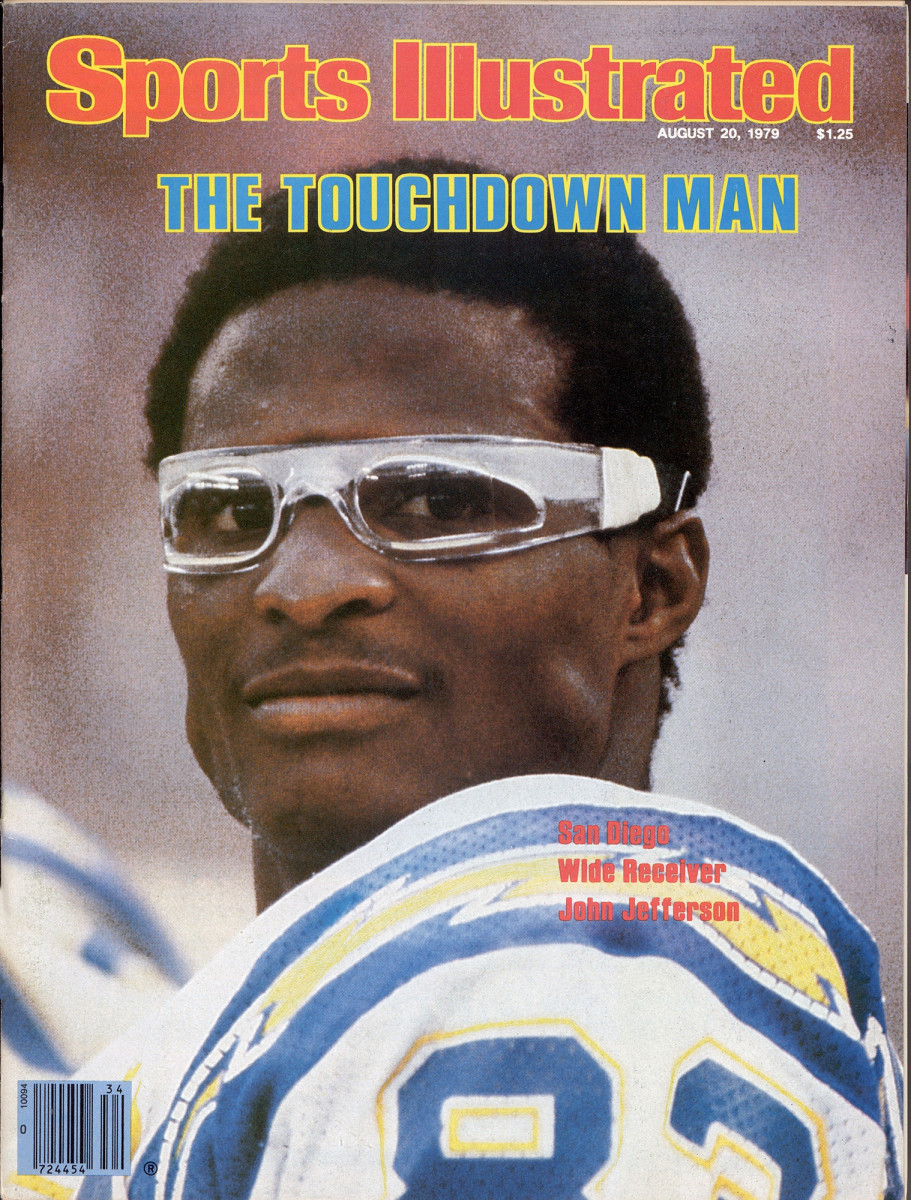
Why they mattered:
The 1979 Chargers are one of the greatest teams to not win the Super Bowl. Yet their impact endures based on an offensive scheme still used all over the NFL.
After a decade of misery, San Diego hired coach Don Coryell four games into the 1978 season. The results were immediate. In ’79, Coryell installed his vertical passing game, and the Chargers began rewriting history. Fouts went from afterthought to sensation, and for three consecutive years set the NFL record for most passing yards in a season.
Coryell’s offensive scheme was predicated on having receivers on different levels of the field, giving his quarterback the option of long, intermediate and short throws. The idea was to read downfield first and then work down. This was the same scheme used by the 1999 “Greatest Show on Turf” Rams, among so many others.
In Coryell’s first full season with the Chargers—alongside offensive coordinator Joe Gibbs—Fouts threw for 4,082 yards and 24 touchdowns. Although first-round tight end Kellen Winslow Sr. was a bit player as a rookie, San Diego had elite talent on the outside with John Jefferson and Charlie Joiner. The duo combined for 2,098 receiving yards and 14 touchdowns, helping the Chargers to the AFC’s top seed.
Panel quote:
“Remember what the Dolphins looked like at the start of the 2023 season? That’s what the Chargers looked like in 1979. It was as if they were playing by a different rule book. In a way, they were. Don Coryell was one of the first NFL coaches to truly comprehend the impact of the league’s pass-friendly ’78 rule changes. So the Chargers threw more passes from more formations with more precision than anyone had ever seen before. And Coryell kept innovating through the early ’80s, while lieutenants like Joe Gibbs spread his new gospel to other franchises. Soon, tight ends became all-purpose superstars and fullbacks across the league were replaced by Smurfs. It all started in Coryell’s first full season and Kellen Winslow Sr.’s rookie year, when the Chargers launched a spaceship offense against a caveman league.” —Mike Tanier, senior NFL writer, The Messenger
Team quote:
“They knew they were potentially all the No. 1 receiver on each pass play. To be honest, I didn’t know who the primary was going to be until I got to the line of scrimmage and started dropping back. The defense told me where to go. That was a big part of it. Also, because they were so smart, we asked them to adjust their routes based upon what they read or were reading as they started their routes. They’re reading the same thing I’m reading, and the defense is never ever going to be right.” —Dan Fouts, Chargers quarterback, 1973–87
